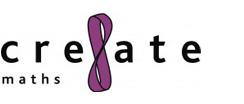Tesselations
The mathematics resources group's December Mathematician, George Polya, worked in many areas of mathematics. His work on plane symmetry and tiling inspired Escher to produce his wonderful tiling patterns.
This list of resources is designed to provide inspiration when teaching tesselations.
Click here to link to a list of resources designed to provide inspiration when teaching symmetry
Tesselations
A website link to use as stimulation for a lesson on tesselations which also provides the opportunity to introduce some history of mathematics.
Starting with the definition of a tesselation and of tiling the website shows how many tesselations also contain a great deal of symmetry and explains how Escher was inspired by reading Polya's work on plane symmetry.
This resource could be used as inspiration for students set a challenge of producing a tiling pattern that has:
one line of symmetry, two lines of symmetry, rotational symmetry order 2, rotational symmetry order 3...
Tiling Patterns
Patio Patterns: Students explore the tiling properties of regular polygons.
Semi-regular tilings: Investigating how two different regular polygons tesselate. Ideal for developing work on interior angles.
More triangles than squares?: Students have to solve geometric problems and think about ratio and equivalency.
Will It or Won't It?
Lesson 1: Students investigate whether shapes will tesselate.
Lesson 2: Students explore the missing angles ina kite and an isosceles triangle.
Lesson 3: An extension of lesson 2 creating more complex angle problems requiring students to demonstrate reasoning skills.
Lesson 4: Exploration of exterior and interior angles of a polygon.
Lesson 5: Students use the knowledge from previous lessons to predict and make tessselations and tilings.
Lesson 6: presentation of their work from lesson 5
Using Dynamic Geometry
This video should be used by teachers wanting inspiration for how to use dynamic geometry software to encourage discussion and mathematical thinking.
A class of Year Eight students explore how and why regular hexagons tessellate before investigating why some other polygons do not.
Polygons
This video should be used by teachers wanting inspiration for how to produce an interactive lessons on polygons in which students create isosceles triangles by folding paper and explore their angles before investigating the interior angles of a regular hexagon. The conditions for tessellation are established and applied to create patterns using a variety of different polygons.



